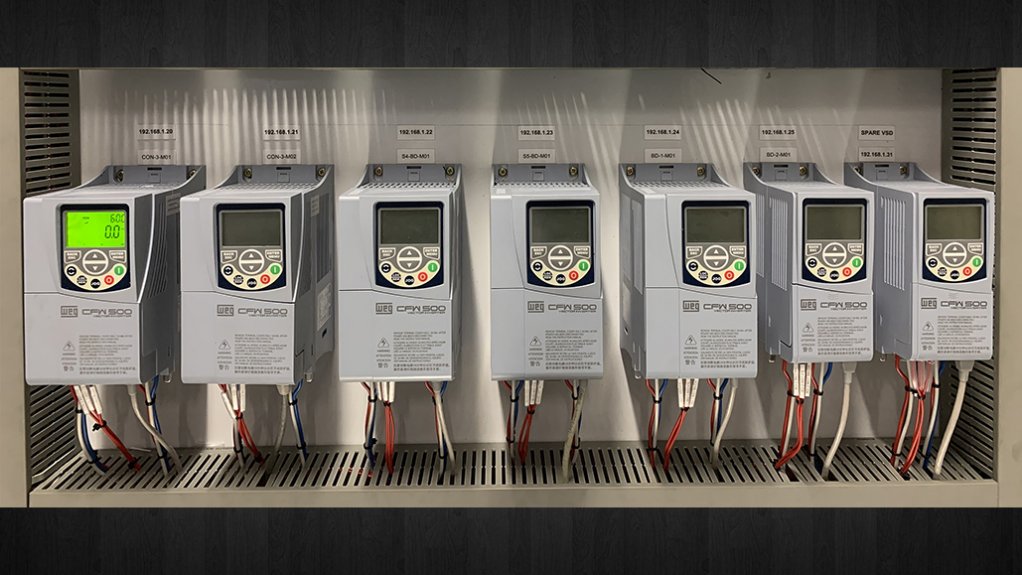Variable speed drives (VSDs) are considered to be vital contributors to energy efficiency and also include features that can reduce the operational disruptions caused by loadshedding.
“Any industrial operation that relies on electric motors will face severe challenges to their continuous workflow when loa shedding strikes,” says Zest WEG Gqeberha branch manager, and previous VSD service manager, Pieter de Villiers. “Much of the disruption is related to the process of starting machinery up again after a power loss, which often must be conducted as a series of sequential actions that an operator must oversee and implement.”
WEG VSD can be used in automating and controlling this start-up, by being programmed to initiate a sequence of actions – eliminating the need for this to be done manually by the operator, explains De Villiers. An example to illustrate this point is where water is being pumped through pipelines which drain out during loadshedding and the pumps cannot be started up again at full speed in a ‘dry’ condition without the risk of cavitation and other damage.
“In cases like this, the WEG VSD can be programmed to start the pump at a lower speed until the pipeline is full of water, after which it could resume full pumping duties,” he says. “Similarly, it is important for a siren to be sounded on a mining operation before a conveyor system is re-activated after the start of loadshedding for safety reasons. The WEG VSD can also be programmed to automate the re-start process, and it initiates the siren to warn staff that the conveyor will be running again.”
WEG VSDs also feature built-in programmable logic controller capability, enabling programming. VSDs can also help prevent equipment from tripping during loadshedding, which can happen in the time between grid power turning off and a back-up generator starting, known as ‘dead time’.
“If dead time lasts more than a few seconds, many motor-driven applications can trip out and require a re-start which can be time-consuming and labour-intensive. A common way that the VSD stays live during this dead time is through the stored energy in its capacitors, allowing it to then re-accelerate the motor when the generator kicks in,” he explains. “It is also possible to set up the drive to utilise the inertia from the load and, therefore, power from the motor itself – essentially using the motor briefly as a generator to keep the VSD alive.”
WEG says its VSDs can also play a role when using renewable energy sources such as solar power. In a hybrid power system where a motor is connected to both the grid and to solar panels, a VSD can utilise the best source to feed the motor. If there is sufficient sunlight, the system will detect and optimise the solar power source but will switch to grid power at night or when it is cloudy.
“This allows motors to be kept running while reducing the cost of energy, and also reducing the user’s carbon footprint,” adds De Villiers.
EMAIL THIS ARTICLE SAVE THIS ARTICLE
To subscribe email subscriptions@creamermedia.co.za or click here
To advertise email advertising@creamermedia.co.za or click here













